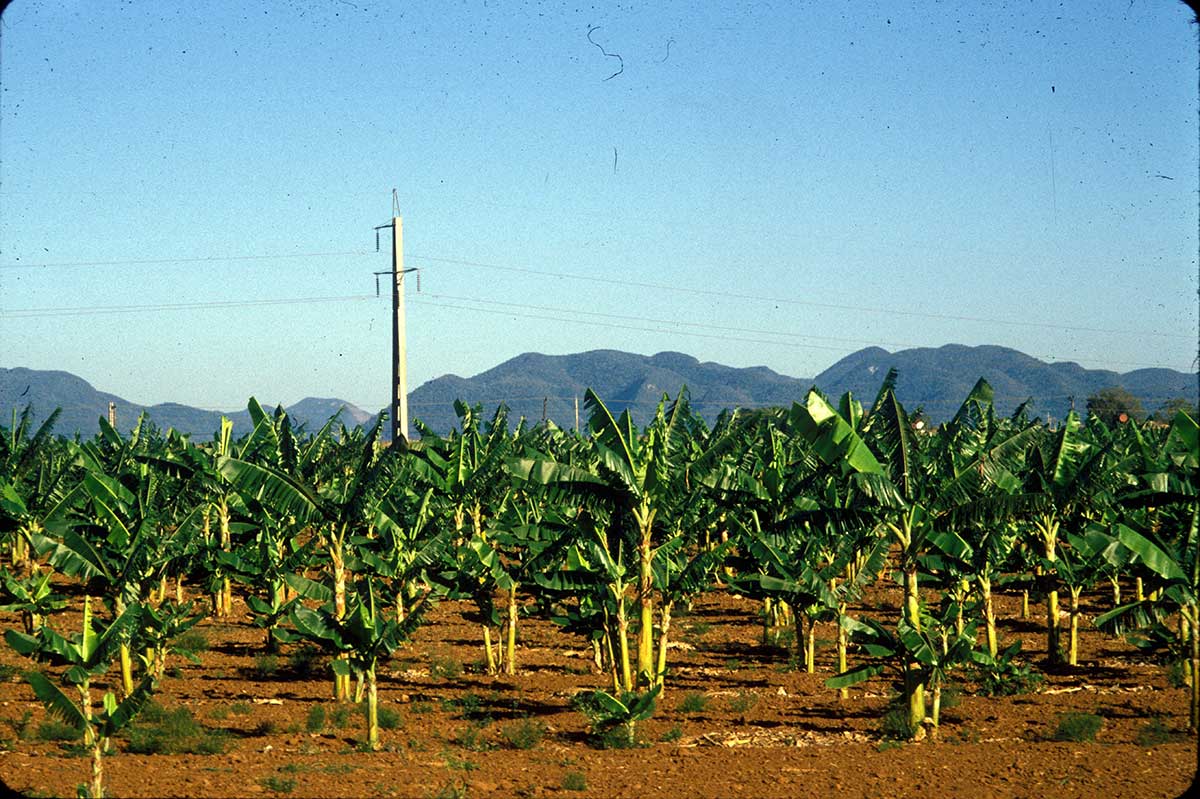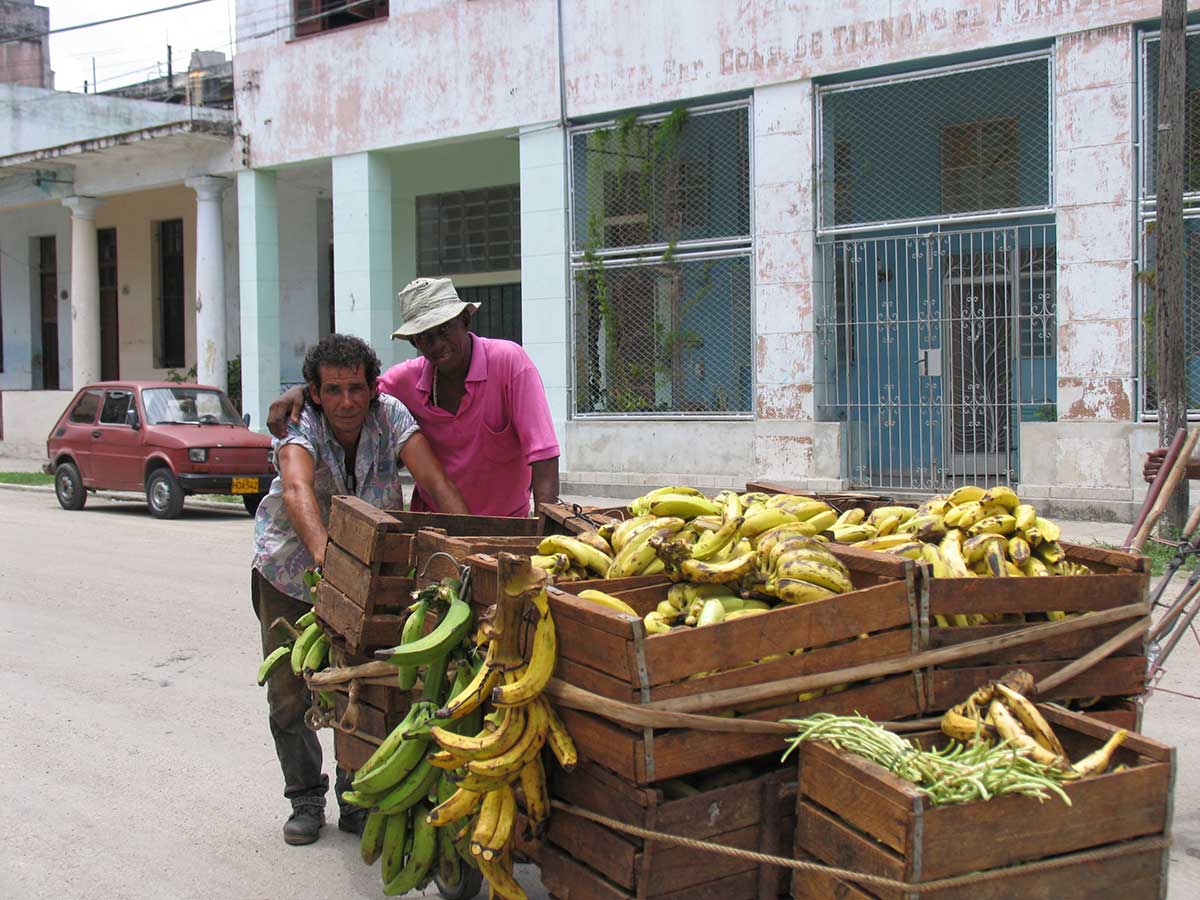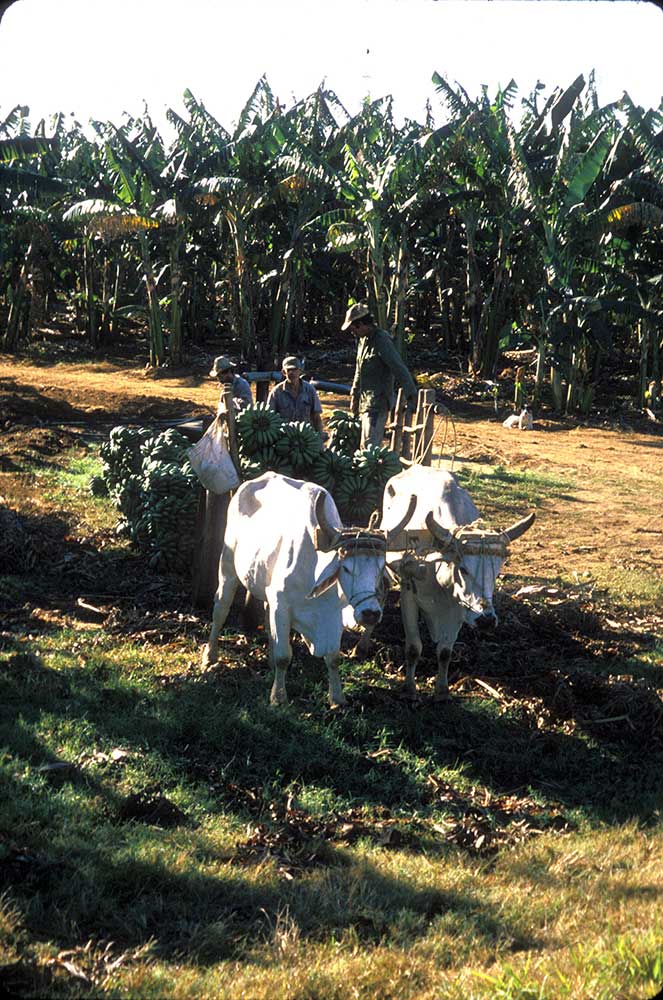Perhaps the most popular product to return en masse to Cuba’s post-Communist cuisine was the traditional plantain, known as the plátano macho. Thanks to farmers who worked in densely planted fields and pregoneros, street dealers who chanted or improvised songs about the quality and nature of their edible wares, younger Cubans learned just how good twice-fried, smashed green plantains (tostónes) could taste, along with chips (mariquitas). Although since 1991 cooking oil has only been sold for foreign currency and not the national currency with which most Cubans are paid, frying plantains into fritters has remained a national pastime. During much of the Revolution, Cubans were forced to consume plátanos burros, or a type of tasteless, spongey plantain historically only given as feed to donkeys, pigs or other farm animals before 1959. As evidenced in the style of cultivation (image 18), plátano burros can be grown far apart from one another and require virtually no human labor inputs—the main reason why they were the preferred crop on government farms, which always suffered from worker absenteeism as well as unproductive, unmotivated laborers.


